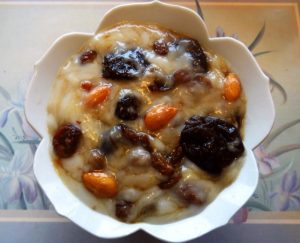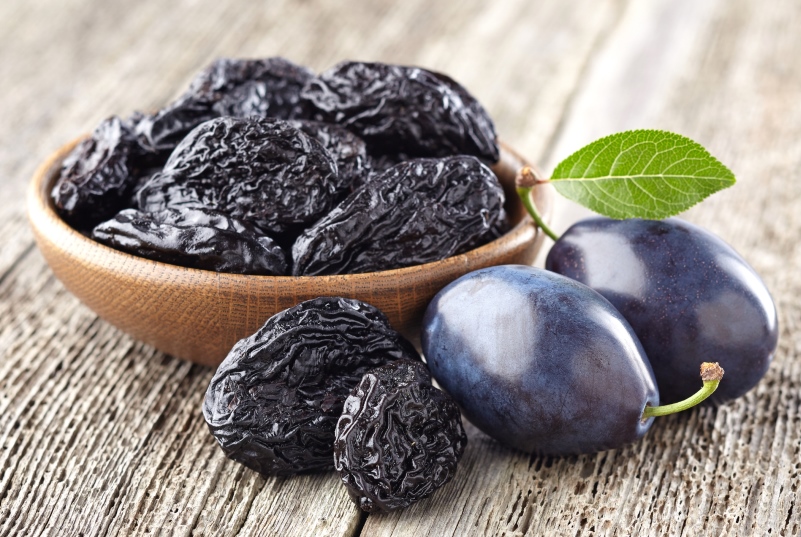Yes, prunes will help you poop and they are a nutritious superfood. They are full of many amazing health benefits from helping with constipation to lowering blood pressure to even helping with weight loss. So do enjoy a healthy prune or two as these dried plums are a tasty sweet treat.
Health Benefits of Nutritious Prunes
Good for Diabetics
Prunes are high in calories and sugars but contain high amounts of fiber, sorbitol and fructose, so interestingly they don’t spike blood sugar levels or insulin levels after eating them. They have a low glycemic index so they increase blood sugar levels at a slow rate.
Prevent Diabetes by Avoiding This Sugar-Free Substitute
Improves Liver Function
Now we know why traditional medicine used prunes as a remedy for hepatitis, a liver infection.
It was found that prune juice and prunes improved liver function and were helpful at preventing liver disease in a study in 2010.
Beneficial for Weight Loss
Researchers at the University of Liverpool had 100 overweight and obese people divided into 2 groups; one group ate prunes every day and the other group did not over a 12-week period. Those who ate prunes lost 2 kg (4.4 lbs.) in weight and 2.5 cm (3/4 inch) off their waists.
Learn 10 Super Sneaky Weight Loss Tips
Helps Lower Blood Pressure
It was found that those who drank prune juice and ate prunes had lower blood pressure than those who did not according to a study in 2010.
Excellent Laxative
What prunes are most well-known for is their use as a laxative.
A 2008 study with 51 adults suffering from constipation found that those that consumed prunes had constipation relief. It helped to soften stools and increase bowel movements. This is because prunes are high in fiber and contain high levels of sorbitol, which is a laxative.
In a 2014 review in the journal Alimentary Pharmacology and Therapeutics, the research found that prunes were better than psyllium husks at treating constipation. Those with constipation can try drinking prune juice.
Prevents Bone Loss
A study with 160 women who were 1-10 years postmenopausal and not on hormone replacement therapy were put into two treatment groups. One group was given prunes and the other dried apples. Also, both groups were given 500 mg Ca and 400 IU vitamin D daily. Before beginning the study their whole body mineral density was assessed and again at the end of the 12-month study. Those in the prune group had more improvement in bone mineral density than those on dried apples.
Another study with 48 women with osteopenia were tested for 6 months and again it was found that prunes prevented bone loss in these older, postmenopausal women. In a 2009 animal study, it was found that prunes reversed bone density loss.
Nutrition
Prunes are a great source of dietary fiber, potassium and vitamin K. Learn more about prune nutrition.
Prune Trivia
- California is the top producer of prunes in the world; they produce 99 percent of the U.S.A supply and 40 percent of the world’s supply.
- In 1905 when a labor shortage hit California, one farmer had 500 monkeys harvest the plums. Each human foreman had a group of 50 monkeys picking the plums but while they picked them well they ate them all up.
- Up to 300 pounds of fruit are produced by a prune plum tree.
- It takes three pounds of plums to make one pound of prunes.
History of Prunes
Prunes being made from plums, it is when they were discovered that prunes had a chance of being created.
- Plums have been written about as early as 479 B.C.
- Pompey the Great in 65 B.C. introduced plums to Rome, and Alexander the Great eventually brought them to the Mediterranean.
- Making prunes from drying plums is believed to have originated two thousand years ago near the Caspian Sea, where prune producing European plums began.
- Drying plums creating prunes really happened in California, which produces the most prunes worldwide
- In the 19th century, Louis A Pellier brought back with him from his native France plum tree cuttings which he planted in California. The Agen variety he planted is the type of plum that is very good to make dried prunes from.
How to Select
You can buy them either pitted or with their pits. It is best to get prunes that are not processed with food preservatives such as sulfites or potassium sorbate. Also, purchase prunes that are in transparent containers so that you can assess them for quality. The best are shiny, plump, a little soft and free of mold.
How to Store
Keep them in a cool, dark, dry place in an airtight container and they will last for several months. Keeping them in the fridge will make them last as long as six months but they will be a little hard when you so take them out of the fridge for an hour before eating them.
Prune Tips
If your prunes get very dry, soak them in water for an hour to plump them up. It always works.
Before you cook them, soak the prunes in water first as this will reduce the cooking time.

Delicious Prune Recipes For You
Sweet Prune Fruit Pudding with Custard is Delicious – This prune fruit pudding made with the fruit compote is so delicious. What makes this pudding so special is being topped with the vegan custard. Also, what I really like about it is that there is no sugar added.
Yummy Prune Jam is Sugar-Free with Apples and Cinnamon – This prune jam recipe was so easy to make and healthy without all that sugar usually found in jams. It took me just over an hour which included taking lots of photos of the jam too. Adding the cinnamon made it extra delicious. I did add a little stevia to make it sweeter. This recipe makes two small jars as seen in the photos in the recipe.
100+ Superfoods
Learn more about some of the healthiest vegetarian foods you will always want to have in your pantry or growing on your deck.READ: Superfoods – Over 100 of the Healthiest Foods You Should Have in Your Diet and learn more about the variety of Superfoods we think you should have in your diet.


